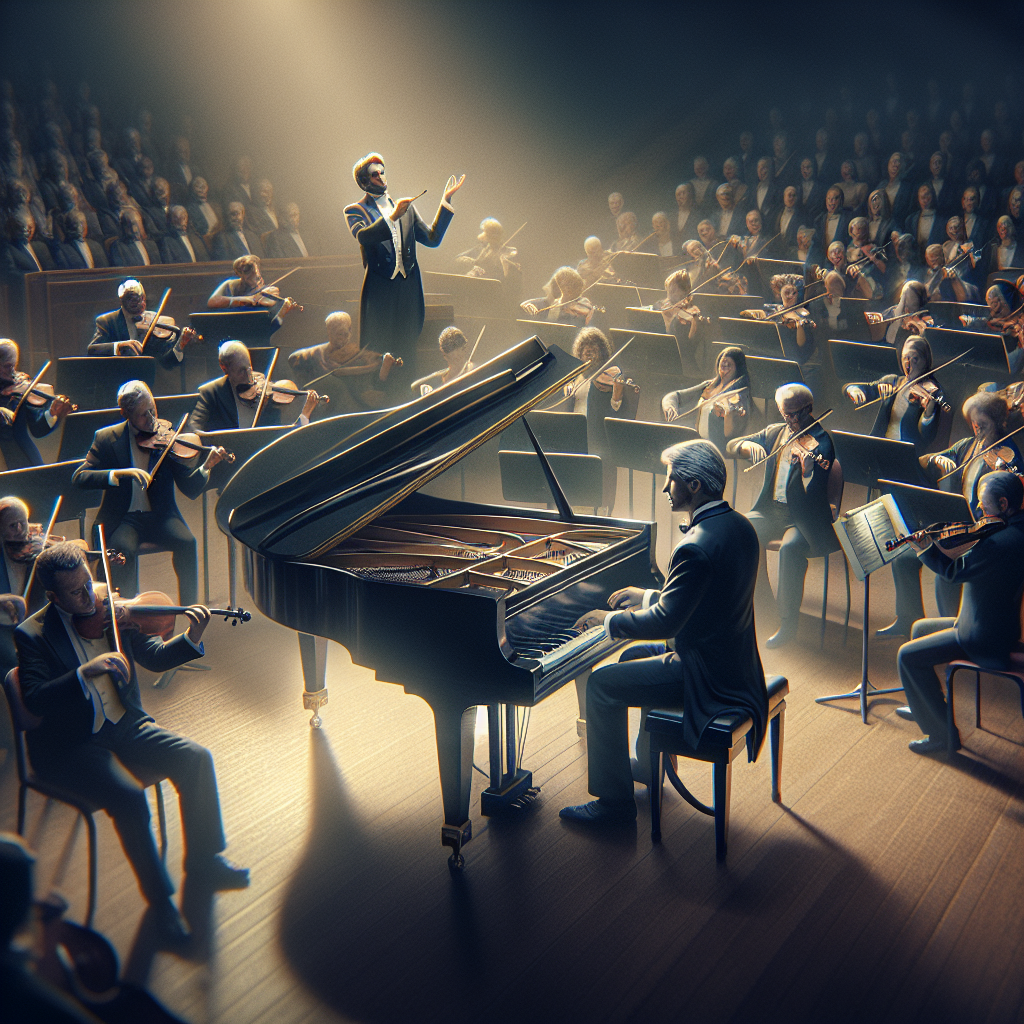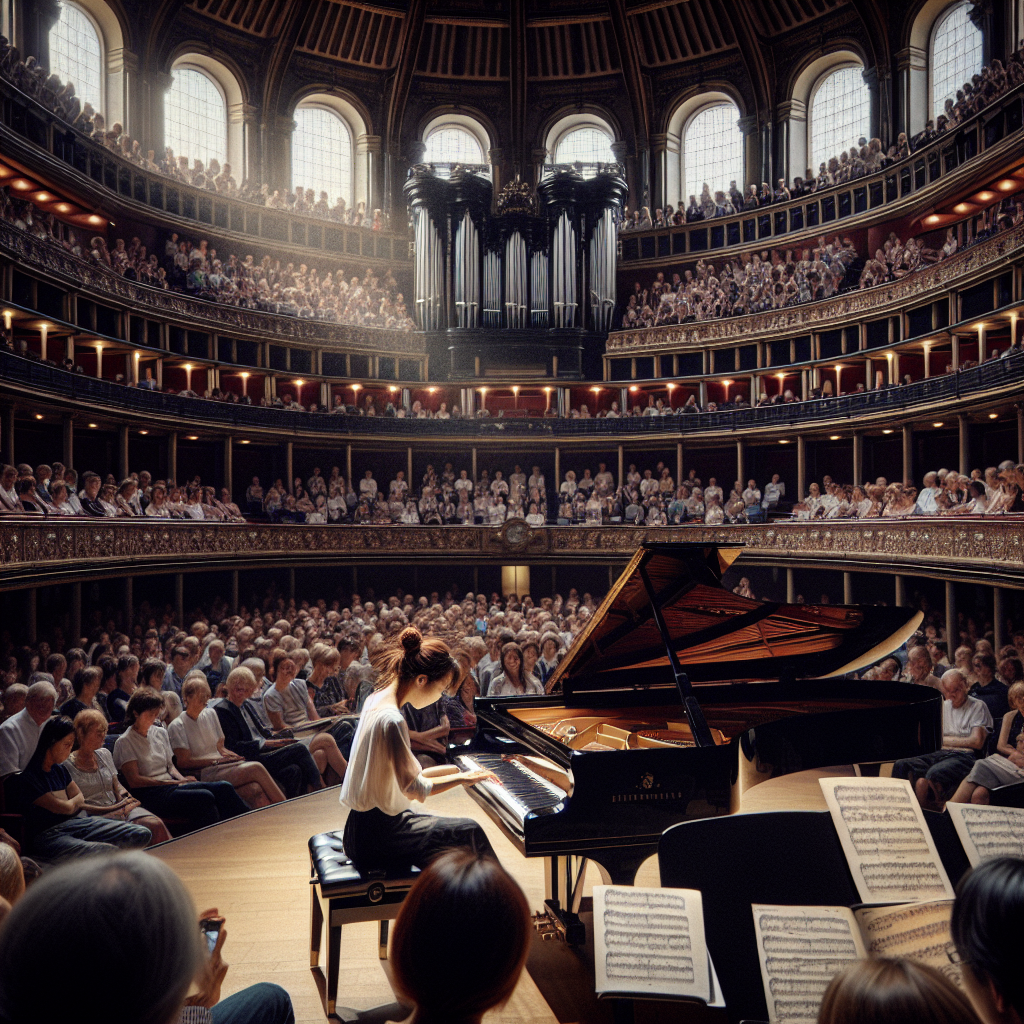
Exploring Beethoven’s Piano Concerto No. 1
Ludwig van Beethoven, one of history’s most celebrated composers, was an innovator who forever changed the landscape of classical music. His works have resonated across centuries, captivating audiences with their emotional depth, technical mastery, and inventive spirit. Among his many celebrated compositions, the Piano Concerto No. 1 in C major, Op. 15, stands out as a testament to his early genius and ambitious creativity.
Composed between 1795 and 1800, the Piano Concerto No. 1 was actually Beethoven’s third attempt at composing a piano concerto. However, it is known as his first because the concertos numbered 0 and 2 were published after this one. This piece marks a pivotal moment in Beethoven’s career, as it showcases his transition from a young prodigy influenced by predecessors like Mozart and Haydn to a burgeoning master ready to establish his unique voice in music.
This concerto is particularly significant as it highlights Beethoven’s early stylistic development, offering a glimpse into the profound and revolutionary compositional techniques that he would later perfect. Through its three movements, Beethoven’s Piano Concerto No. 1 reveals his impeccable ability to blend structure with expressiveness, making it a cornerstone in his vast and varied repertoire.
In this article, we will delve into the history and structure of Beethoven’s Piano Concerto No. 1, exploring its musical brilliance and the defining characteristics that make it a timeless masterpiece. By examining its context, movements, and lasting impact, we can better appreciate Beethoven’s extraordinary contribution to the world of classical music.
Historical Context
The late 18th century was a bustling period in European classical music, characterized by the transition from the Classical era to the Romantic era. During this time, Vienna emerged as the epicenter of musical innovation, attracting composers, virtuosos, and patrons who thrived in its vibrant cultural milieu. Beethoven moved to Vienna in 1792, determined to forge a career as a pianist and composer under the tutelage of Joseph Haydn.
It was in this dynamic environment that Beethoven began to develop his early works, including his Piano Concerto No. 1. The piece reflects the influences of Mozart and Haydn, with whom Beethoven shared a deep admiration. However, it also demonstrates his own emerging style, marked by a more robust use of harmonic complexity and dramatic expression. These elements would later become hallmarks of his compositions.
The concerto was premiered on December 18, 1795, at a concert in Vienna’s Burgtheater. Remarkably, Beethoven himself was the soloist, showcasing not only his compositional skills but also his virtuosic abilities as a pianist. The performance was a significant success, earning him accolades and further establishing his reputation as an innovative and formidable figure in the musical world.
Understanding the historical context of Beethoven’s Piano Concerto No. 1 is crucial, as it situates the work within the broader narrative of Beethoven’s artistic evolution and the shifting trends of the time. This context helps us appreciate the concerto as a bridge between the classical traditions of its predecessors and the monumental transformations that Beethoven was about to bring to music.
First Movement: Allegro con brio
The first movement of Beethoven’s Piano Concerto No. 1, Allegro con brio, opens with an orchestral introduction characterized by its lively and energetic spirit. This introduction sets the stage for the soloist, who enters with a bold and assertive declaration. Unlike many of his contemporaries, Beethoven masterfully balances the roles of soloist and orchestra, creating a dynamic interplay that enhances the overall drama of the movement.
The thematic material in the Allegro con brio is quintessentially Beethovenian, showcasing his ability to develop and transform motifs with ingenuity. The movement’s principal theme, presented by the orchestra at the outset, is robust and rhythmic, reflecting Beethoven’s penchant for strong, clear ideas. As the movement progresses, the soloist’s part becomes increasingly elaborate, featuring intricate runs, trills, and arpeggios that display both technical prowess and expressive depth.
One of the most striking aspects of this movement is Beethoven’s innovative use of the cadenza. Typically, a cadenza allows the soloist to exhibit their virtuosity in an unaccompanied section towards the end of the movement. In this concerto, Beethoven composed multiple cadenzas, each exploring different facets of the thematic material. These cadenzas serve not only as showcases for the performer but also as critical structural elements that intensify the movement’s dramatic narrative.
The Allegro con brio concludes with a spirited coda, bringing the movement full circle. The energy and brilliance of this section reaffirm Beethoven’s mastery in creating compelling and cohesive musical journeys. This opening movement’s complexity and vitality set the tone for the entire concerto, inviting the listener into Beethoven’s world of innovation and emotional expression.

Second Movement: Largo
The second movement, Largo, offers a stark contrast to the spirited first movement. Here, Beethoven shifts to a more contemplative and introspective mood, showcasing his ability to convey profound emotions through simplicity and lyrical beauty. Written in the key of A-flat major, the Largo movement exudes a sense of serenity and profound depth, reflecting Beethoven’s evolving emotional and artistic sensibilities.
The movement begins with a gentle and expansive orchestral introduction, setting a tranquil atmosphere that allows the piano to enter in a contemplative manner. Unlike the robust dialogue of the first movement, the interplay between the piano and orchestra in the Largo is more intimate and nuanced, emphasizing subtlety over grandeur. Beethoven’s use of delicate dynamics and expressive phrasing in the solo part further enhances the movement’s emotive quality.
The thematic material in the Largo is characterized by its lyrical and song-like quality. Beethoven introduces a long, flowing melody that unfolds gently, creating a sense of boundless space and timelessness. This melody is imbued with a poignant sense of longing, capturing the listener’s heart with its expressive beauty. The piano part, while technically less demanding than in the Allegro con brio, requires a high level of sensitivity and expressive nuance to convey its emotional depth fully.
One of the most striking features of the Largo is its harmonic exploration. Beethoven employs rich and unexpected harmonic shifts, adding layers of complexity and color to the movement. These harmonic progressions enhance the music’s emotional impact, creating a captivating listening experience that resonates deeply with the audience.
Overall, the Largo movement serves as a powerful emotional center of Beethoven’s Piano Concerto No. 1, offering a moment of introspection and lyrical beauty amid the surrounding brilliance and energy. It showcases Beethoven’s ability to convey profound emotional depth through his music, reaffirming his status as one of the great masters of classical composition.
Third Movement: Rondo (Allegro scherzando)
The final movement of Beethoven’s Piano Concerto No. 1, the Rondo (Allegro scherzando), brings the concerto to a joyous and spirited conclusion. Marked by its playful and lively character, this movement reflects Beethoven’s lighter, more humorous side, showcasing his adeptness at blending technical brilliance with wit and charm.
Structured in the traditional rondo form, this movement alternates between the main recurring theme (refrain) and contrasting episodes. The principal theme, introduced by the piano, is vibrant and rhythmically engaging, instantly capturing the listener’s attention. Beethoven’s intricate interplay between the soloist and orchestra in this movement is particularly noteworthy, as he deftly weaves the thematic material between them, creating a dynamic and cohesive musical dialogue.
The contrasting episodes in the Rondo are equally captivating, offering various moods and textures that keep the listener engaged throughout the movement. Beethoven’s compositional ingenuity shines through in these sections, as he explores different keys, thematic developments, and rhythmic patterns, adding layers of complexity and interest to the music.
One of the defining features of the Rondo (Allegro scherzando) is its rhythmic vitality. Beethoven employs syncopation, offbeat accents, and playful rhythmic motifs to create a sense of buoyancy and excitement. These rhythmic elements contribute to the movement’s overall sense of joy and exuberance, making it a fitting and jubilant conclusion to the concerto.
The concerto draws to a close with a high-spirited coda, where Beethoven intensifies the rhythmic drive and dynamic energy. The piano and orchestra join forces in a final, exuberant flourish, bringing the concerto to a thrilling and triumphant conclusion. This final movement not only showcases Beethoven’s technical brilliance but also his ability to infuse his music with character and charm, leaving a lasting impression on the listener.
Conclusion
Beethoven’s Piano Concerto No. 1 in C major, Op. 15, stands as a quintessential example of his early compositional prowess and innovative spirit. Through its three distinctive movements, the concerto encapsulates Beethoven’s genius in blending technical mastery with emotional depth, offering a rich and varied musical experience that continues to captivate audiences today.
The concerto reflects Beethoven’s journey from a young composer influenced by the classical traditions of Mozart and Haydn to a pioneering artist ready to forge his unique path. Its historical context, intricate structures, and emotive qualities highlight the transformative period in which it was created, marking a significant moment in Beethoven’s artistic evolution.
From the lively and robust Allegro con brio, through the serene and introspective Largo, to the spirited and playful Rondo (Allegro scherzando), each movement contributes to the concerto’s overall brilliance and enduring appeal. Beethoven’s imaginative use of thematic development, harmonic exploration, and rhythmic vitality showcases his unparalleled ability to create music that resonates deeply with listeners.
As we explore the richness of Beethoven’s Piano Concerto No. 1, we gain a deeper appreciation for his extraordinary contribution to the world of classical music. This concerto not only highlights Beethoven’s early genius but also serves as a precursor to the monumental works that would later define his career. It is a testament to his enduring legacy as one of the greatest composers in history, whose music continues to inspire and move audiences around the world.